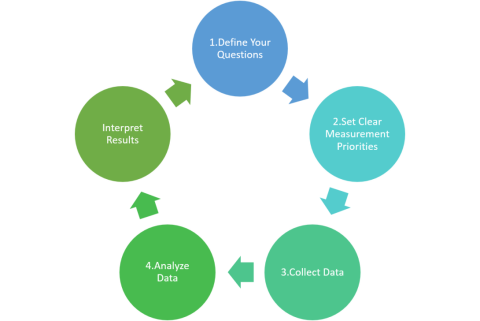
For most businesses and government agencies, lack of data isn’t a big problem. In fact, in many case, it is in the opposite side - there’s often too much information available to make a better decision in right time.
With so much data to sort through, you need something more from your data:
- You need to know it is the right data for answering your question;
- You need to draw accurate conclusions from that data; and
- You need data that informs your decision making process
In short, you need better data analysis. With the right data analysis process and tools, what was once an overwhelming volume of disparate information becomes a simple, clear decision point. With past projects experience and lesson learned, we recommend to execute these five steps in your data analysis process for better decision making results:
Step 1: Define Your Questions
In your business data analysis project, you must begin with the right question(s). Questions should be measurable, clear and concise. Design your questions to either qualify or disqualify potential solutions to your specific problem or opportunity.
For example, start with a clearly defined problem: A contractor is experiencing rising costs and is no longer able to submit competitive contract proposals. One of many questions to solve this business problem might include: Can the company reduce its staff without compromising quality?
Step 2: Set Clear Measurement Priorities
This step breaks down into two sub-steps:
A) Decide What To Measure
Using the government contractor example, consider what kind of data you’d need to answer your key question. In this case, you’d need to know the number and cost of current staff and the percentage of time they spend on necessary business functions. In answering this question, you likely need to answer many sub-questions (e.g., Are staff currently under-utilized? If so, what process improvements would help?). Finally, in your decision on what to measure, be sure to include any reasonable objections any stakeholders might have (e.g., If staff are reduced, how would the company respond to surges in demand?).
B) Decide How To Measure It
Thinking about how you measure your data is just as important, especially before the data collection phase, because your measuring process either backs up or discredits your analysis later on. Key questions to ask for this step include:
What is your time frame? (e.g., annual versus quarterly costs)
What is your unit of measure? (e.g., USD versus CNY)
What factors should be included? (e.g., just annual salary versus annual salary plus cost of staff benefits)
Step 3: Collect Data
With your question clearly defined and your measurement priorities set, now it’s time to collect your data. As you collect and organize your data, remember to keep these important points in mind:
Before you collect new data, determine what information could be collected from existing databases or sources on hand. Collect this data first.
Determine a file storing and naming system ahead of time to help all tasked team members collaborate. This process saves time and prevents team members from collecting the same information twice.
If you need to gather data via observation or interviews, then develop an interview template ahead of time to ensure consistency and save time.
Keep your collected data organized in a log with collection dates and add any source notes as you go (including any data normalization performed). This practice validates your conclusions down the road.
Step 4: Analyze Data
After you’ve collected the right data to answer your question from Step 1, it’s time for deeper data analysis. Begin by manipulating your data in a number of different ways, such as plotting it out and finding correlations or by creating a pivot table in Excel.
A pivot table lets you sort and filter data by different variables and lets you calculate the mean, maximum, minimum and standard deviation of your data.
As you manipulate data, you may find you have the exact data you need, but more likely, you might need to revise your original question or collect more data. Either way, this initial analysis of trends, correlations, variations and outliers helps you focus your data analysis on better answering your question and any objections others might have.
During this step, data analysis tools and software are extremely helpful. Visio, Minitab and Stata are all good software packages for advanced statistical data analysis. However, in most cases, nothing quite compares to Microsoft Excel in terms of decision-making tools.
Step 5: Interpret Results
After analyzing your data and possibly conducting further research, it’s finally time to interpret your results. As you interpret your analysis, keep in mind that you cannot ever prove a hypothesis true: rather, you can only fail to reject the hypothesis. Meaning that no matter how much data you collect, chance could always interfere with your results.
As you interpret the results of your data, ask yourself these key questions:
Does the data answer your original question? How?
Does the data help you defend against any objections? How?
Are there any limitation on your conclusions, any angles you haven’t considered?
If your interpretation of the data holds up under all of these questions and considerations, then you likely have come to a productive conclusion. The only remaining step is to use the results of your data analysis process to decide your best course of action.
By following these five steps in your data analysis process, you make better decisions for your business or government agency because your choices are backed by data that has been robustly collected and analyzed. With practice, your data analysis gets faster and more accurate – meaning you make better, more informed decisions to run your organization most effectively.
